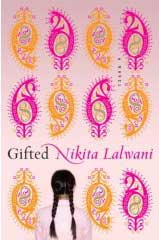Vinay Lal, "The Other Indians"
In lieu of a comprehensive review, below are a few highlights and interesting tidbits from The Other Indians that I picked up on: Elihu Yale, early Immigration/Legal issues, Religion, and the old terminology question.
Elihu Yale
Lal's chapter on the early American relationship with India was interesting to me, specifically the account of Elihu Yale (i.e., the Yale who gave Yale University its name):
Well before Indians first began to arrive in some numbers in the United States a little before 1900, trade had brough the products of ‘East India’ –tea, spices, silk, muslin, opium—to New England homes. Salem owed its greatness to the commerce with the East . . . It is the ‘magnificent Oriental plunder’ accumulated by Elihu Yale in India, who served as a lowly clerk in the East India Company’s offices before he rose to assume charge of the Madras Presidency, that lifted a New England college founded in 1676 from the doldrums and prompted its founders to rename the college in honor of the wealthy donor. As a young boy, Ralph Waldo Emerson, later to be known as the ‘Sage of Concord’ and the leader of a group of writers and thinkers who would be characterized as the ‘Transcendentalists,’ often visited Boston’s ‘India Wharf’ which had by his time becomethe leading center of trade with China and India. Emerson confided to his journal in 1836 that everything in ‘this era’ had been made ‘subservient’ to ‘Trade,’ and ‘On us the most picturesque contrasts are crowded. We have the beautiful costume of the Hindoo and the Turk in our streets.’ (Lal, 8)
I have sometimes wondered whether folks at Yale today ever stop to think about the colonial legacy of Elihu Yale. (Is there anyone reading this who went to Yale, who's looked into it?)
The Dark Years: Bhagat Singh Thind, 1920-1940
I also found Lal’s account of the legal history of Indian-American citizens following the Asian Exclusion Act informative. After allowing a first wave of immigrants from India around the turn of the century, U.S. immigration authorities started to tighten restrictions on Indian immigrants by 1910, rejecting more and more applicants, in part because of fears about the Ghadr movement, and in part because of rising general xenophobia about immigrants from Asia. Still, prior to 1923, many Indians could get around racial restrictions by claiming to be ’Caucasian.’ In 1923, this was reversed, when the U.S. Supreme Court decided that Bhagat Singh Thind needed to be ‘de-naturalized’:
In early 1923, the Supreme Court heard on appeal from the Immigration Bureau the case of Bhagat Singh Thind, whose application for naturalization had been granted in the face of the Bureau’s opposition. Thind, a Caucasian of ‘high-caste Hindu’ stock ‘of full Indian blood,’ enterd the U.S. through Seattle in 1912, enrolled as a student at Berkeley in 1913, and was one of a handful of Indians who fought in World War I under the U.S. army. . . . Thind’s lawyers rested their case on the two-fold argument that, on the anthropological evidence, north Indians were Aryans and thus Caucasians, and, secondly, by judicial precedent Caucasians were to be construed as whites. Justice Sutherland took the contrary view: in the ‘understanding of the common man,’ . . . ‘white’ clearly denoted a person of European origins. ‘It may be true,’ wrote Sutherland, ‘that the blond Scandinavian and the brown Hindu have a common ancestor in the dim reaches of antiquity, but the average man knows perfectly well that there are unmistakable profound differences between them today.’ The ‘Aryan theory’ had been ‘rejected by most, if not all, modern writers on the subject of ethnology,’ and the word ‘Caucasian,’ Sutherland argued, ‘is in scarcely better repute.’ (Lal, 37-38)
Funny that Judge Sutherland, in 1923, was casting doubt on the Aryan invasion theory even then. (Isn’t it strange that some people still want to believe it’s true, even today?)
Another surprise in Lal’s account is of the years subsequent to the Thind case: despite the fact that the U.S. had decided it could de-naturalize Indian immigrants who had achieved citizenship, in practice, it happened to very few people. A lawyer named Sakharam Ganesh Pandit, who was a naturalized U.S. citizen, successfully went to the Supreme Court in 1927, to defend his naturalization as valid, and after that de-naturalization was quite rare. The real impact of the Asian Exclusion Act and the Thind case was that Indians no longer immigrated to the U.S., and many who had already settled here decided to leave. According to the U.S. census, there were 8000 Indians in California in 1917, but only 1,476 by 1940 (Lal, 40). Throughout the entire country, there were only 2,045 self-identified Indians present in the U.S. in 1940. (Just forty years later, in 1980, the Census recorded 387,223 Indians in the U.S., and that number has of course jumped again in both 1990 and 2000.)
Religion: Hindu Temple Architecture
I also learned from Lal’s treatment of religion as it is practiced by Indian Americans. He does not ignore some of the radical religious groups, like the VHP-A. But he doesn’t obsess over them either, and he makes space for a detailed account of the complexities of Hinduism as it is actually practiced in the U.S. by ordinary people. He has, for instance, interesting details on houses of worship, referring to some of the new temples that have been built with strict adherence to architecture stipulated the Shilpa Sastras, as well as the more syncretic temples that are structured very differently than they would be in India. I thought the following was interesting, along these lines:
A large metropolitan center such as Los Angeles is home to a Murugan temple, at least two Radha Krishna temples, a Kali Mandir, a Devi Mandir, a Sanatan Dharma Mandir, a Lakshmi Narayan Mandir, a Sri Venkateswara temple, and close to a dozen other temples. The nondescript Valley Hindu Temple of Northridge, where a sizable Indian community has developed over the last two decades, is representative of the other, nonsectarian tradition of Hindu temples in the United States, insofar as the temple houses a diverse array of deities—Shiva, Ram, Krishna, Durga, Lakshmi, to name a few—and welcomes Hindus in the diaspora of all persuasions. It has sometimes been suggested that Hindus in the diaspora may be less attentive to distinctions which hold sway in India, such as those between north and south, Vaishnavites and Saivites, and so on. Whether this is partly on account of their own minority status in the U.S. is an interesting and yet unresolved question. Whether this phenomenon is as distinct as is sometimes argued is also questionable. While images of both Vishnu and Shiva are not usually housed under one roof in Hindu temples in India, and the mythological works known as the Puranas—where the history, genealogy, and worship of these gods is articulated—are exceedingly sectarian, the Puranas are less exclusive than is commonly argued. Thus, a Vaishnava Purana usually elevates Vishnu as the supreme God but still has ample room for Shiva; a Saivite Purana inverses the order. A Devi Purana, dedicated to the Goddess, will similarly render secondary the male Gods. (Lal, 73-74)
I wonder if any readers who have been to different temples around the U.S. (and perhaps also in India) might have any comments on temple construction in the U.S. vs. India. (It might seem like an obscure topic, but actually I think architecture of houses of worship says a lot about the way people practice their faiths.)
The Old Terminology Problem: Desi, South Asian, etc.
Though I think very highly of Lal’s book, his discussion of terminology did raise some questions for me at certain points. Lal eschews the word “desi,” and settles on “Indian-American,” and explains carefully why he’s doing so. I can’t reproduce all of Lal’s arguments along these lines, but the following paragraph stood out to me as an interesting (though not necessarily compelling) critique of “desi”:
Though there is no gainsaying the fact that many proponents of the term ‘desi’ similarly seek to invoke its widest and most pluralistic meanings, calling forth the shared lives of many South Asians, the term operates on many different and disjunctive registers. As I have often been reminded by an old friend from Jaisalmer, in Western Rajasthan, words such as ‘country’ mean quite different things to people from metropolitan centers and those who earn their livelihoods in India’s tens of thousands of villages and smaller towns. When my friend chances to remark ‘Hamare desh me aisa hota hai’ (‘This is how it happens in our country’), by desh he clearly means his part of the country. The observation invokes not so much the nation in the abstract, much less Bharat, but rather a frame of mind and a set of habits. The word ‘desi’ also calls to mind home-grown products: thus, for example, no that liberalization has opened the Indian market to a whole array of foreign goods, including Western/hybrid varieties of fruits and vegetables, one hears often of the contrast between foreign vegetables and those branded ‘desi’—the latter being small and (in common belief) much more palatable to the taste than foreign varieties. There is, it appears to me, something unsettling and certainly odd about the fact that the most enthusiastic proponents of the word ‘desi’ are precisely those diasporic Indians who, in many ways, have least claim to the word and its multiple inheritances, considering their location in metropolitan centers of thought and their immense distance from local and vernacular knowledge systems. For these reasons among many, I have, except in a few particular instances, eschewed the word ‘desi’ when speaking of Indian Americans. (Lal, xi)
I understand Lal’s reasoning, though I don’t think it’s necessarily always a mark against "desi" that many people who use the term are diasporic, and perhaps less connected to South Asian culture. I don't think the variations in the way "desi" (and videsi and pardesi) is used within northern India necessarily make the diasporic deployment of it less true within its context. Language can change.
Later, Lal also addresses the term "South Asian American," and introduces some concerns about it that will be familiar to readers of the endless debates over terminology that have taken place on Sepia Mutiny over the years (to wit: the problem of tokenizing or ignoring ‘smaller’ countries in South Asia; the fact that few people outside of secular/progressive communities would actually identify themselves primarily as “South Asian”; the confusion of South Asia with Southeast Asia; the difficulties of limiting South Asia geographically, with Afghanistan on the west and Burma on the east, etc.).
[Incidentally, I also address the terminology question in this published essay.]
Again, while the problems with the term "South Asian" (or "South Asian American") are real, they are not insurmountable, and Lal’s reasons for electing not to use the term were not entirely convincing to me. In the end, he seems to settle on "Indian American" because, "it appears to me to best do justice to those people who are the subject of this book." In effect, it seems to me that Lal may have decided for practical reasons to focus primarily on immigrants from India in particular as the subject of his book, and some of his arguments about the problems with the term “South Asian” (or “South Asian American”) might be beside the point.
That said, The Other Indians is a great read and a very helpful book overall.
Labels: Diaspora, History, Immigration



